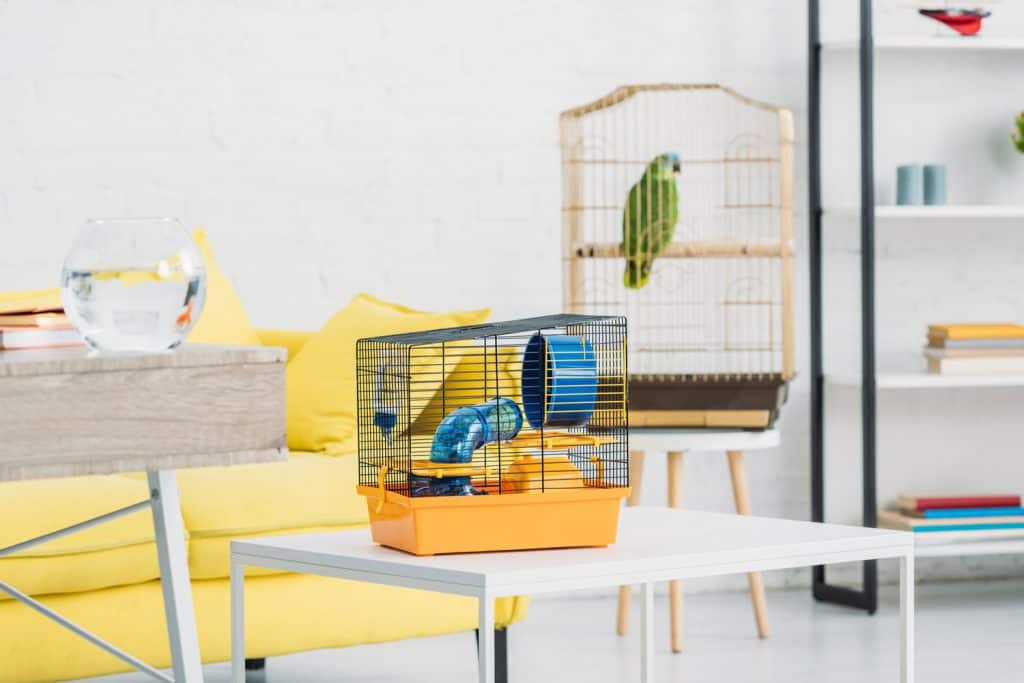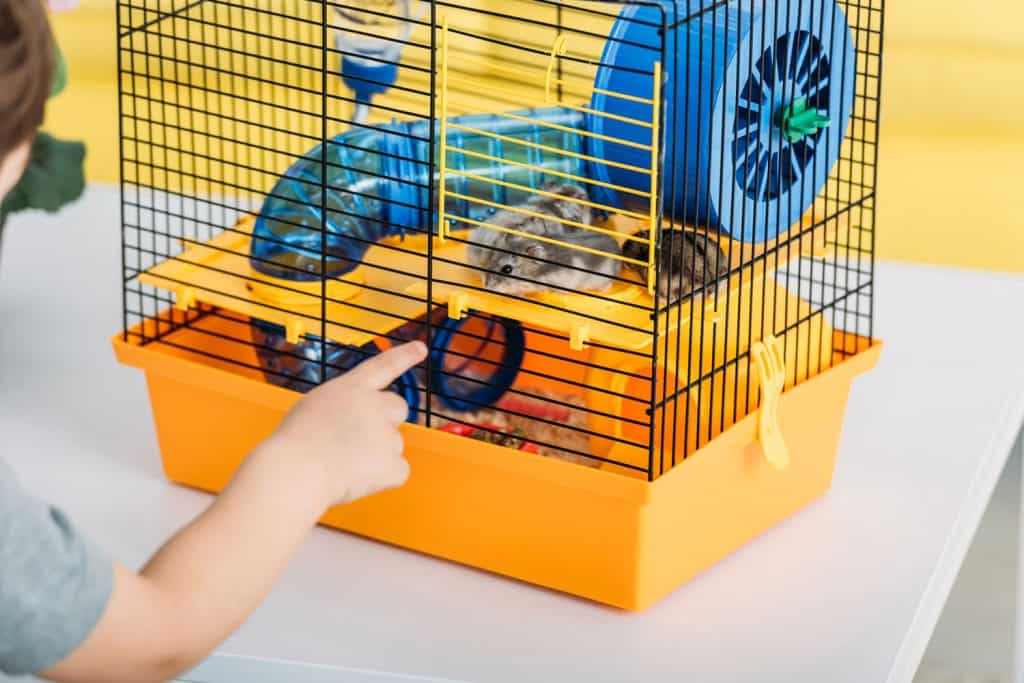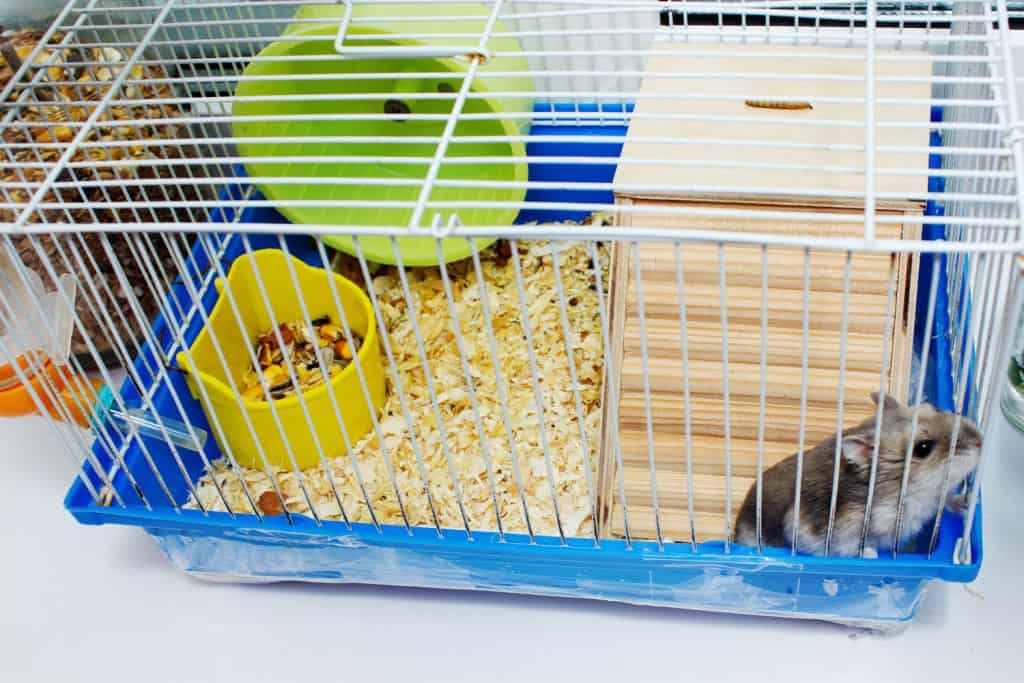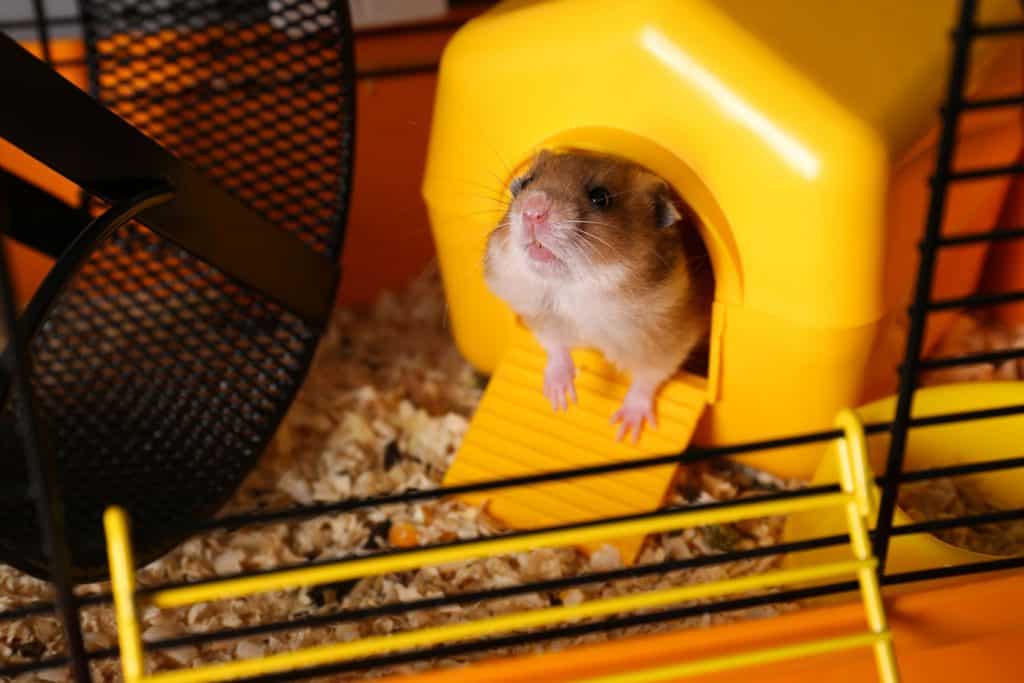One of the first things a new hamster owner wonders about is where they should put its cage? Finding the perfect spot is the first step in creating a nurturing environment for your little fur ball. After extensive research, I found out some information that’ll help you find the perfect location inside your home.
A room with the following conditions should be the perfect location for your hamster’s cage:
- Quiet
- Away from ultrasonic sounds
- Able to maintain regular lighting
- Stable temperature
- Low foot traffic
- Away from windows and direct sunlight.
- No drafts
Each of these factors is vital in creating a nurturing environment for your hamster. But I know listing them out is a little vague, which is why I’ll discuss them further later in this post. So please, read on and get all the information you’ll need to find the perfect cage location for your hamster!

The Factors to Consider When Picking the Spot for Your Hamster’s Cage
The location of the cage is a crucial piece to creating a habitat where a hamster can thrive. But many different factors go into deciding where that perfect cage location is inside your home. I'll extensively discuss these factors in five different parts that I outline below:
- How quiet the room is
- Presence of Ultrasonic Sounds
- The Room’s Lighting
- Ability to Keep a Stable Temperature
- Your Other Pets’ Ability to Access the Room
And once you read through each part, you shouldn’t have issues finding the place that mimics these conditions the best!
How quiet is the room?
Hamsters sleep during the day because they’re classified as crepuscular animals. This classification means they tend to be active in the hours of dusk and dawn (twilight). A quiet atmosphere within these times will help ensure your hamster doesn’t become grumpy.
Just like with humans, lack of sleep can impact a hamster’s mood and personality. A quiet room away from the chaoticness that lies inside a human’s household will help brighten your hamster’s day.
It simple really; a hamster that’s well-rested will be more open to being sociable. I mean, I wouldn’t be too thrilled to run around a hamster wheel with only having about two hours of sleep either.
Presence of Ultrasonic Sounds
You might see the world ultrasonic and think what’s that? Well, ultrasonic refers to sounds that have frequencies above the audible levels of humans: meaning we can’t hear them. But hamsters have incredible hearing, which can detect ultrasonic sounds and can be quite irritating for them.
Ultrasonic sounds can be emitted from household electronics items such as computers or televisions. They can even be emitted from your house’s pipes, which means you should keep their cage away dishwashers and taps as well.
Keeping your hamster’s cage in a room without these items will help them have uninterrupted sleep sessions. If you don’t, these sounds can become incredibly annoying for your hamster and affect their overall mood.
I’d imagine it’d be like having the constant sound of white noise infecting your eardrums on a 24/7 basis. Nothing you’d like to experience, so, ensure your hamster doesn’t have to either.
The Room’s Lighting
Another factor that’s massively essential to your hamster’s sleeping schedule is the room’s lighting. Hamsters are routine-based creatures that could benefit from having the room darkened during their sleep sessions.
But since their routine-based creatures, the lights being flicked on and off at random points throughout the day could cause some problems. It could be increasing detrimental to their sleeping schedules, especially, during the day.

This is why a room that’s able to offer them lights being turned off could do wonders in creating a nurturing habitat. But again, make sure you keep the lights off or on during the same portions of each day; this will allow your hamster to adjust their sleep schedules around the room’s lighting.
Ability to Keep a Stable Temperature
Hamsters have a proclivity to get overheated or too cold rather quickly. Both of these scenarios can cause a heap of issues you don’t want to deal with as a hamster owner. These issues obviously mean you must keep these little creatures away from windows and direct sunlight.
But things like fireplaces, radiators, or any room that’s damp/humid could cause significant issues too. It's best you look for a place where you can efficiently regulate the temperature to a comfortable range.
An example of somewhere that isn’t an appropriate place would be a hallway or a garage. Both these places are prone to temperature fluctuation that could threaten your hamster’s life; basements are also a no-go. Any area with drafts shouldn’t be considered as well.
As a result, you shouldn’t think of putting your hamster’s cage near an air conditioner or air conditioning vent either. Instead, look for a bedroom or guest room away from windows. Either situation would do quite nicely as your hamster’s new home.
Your Other Pets’ Ability to Access the Room
Your other pets might not have any bad intentions, but a large animal staring inside their cage will freak your hamster out. Even a smaller pet such as a cat could cause your hamster to get a little skittish.
If you do allow your other pets to have room access, it’ll only stress your hamster out. You might see them have a drastic shift in personality if they’re always in the presence of a cat or dog. Let’s face it; hamsters are tiny, and a cat or dog will look like Godzilla to them.
It’s in everyone’s best interest to keep your other pets away from your hamster. And this exclusion also goes for kids who might become a little obsessive about playing with the hamster; these are shy, solitary creatures.
It’s best to let them be and let them open up at their own pace. If you force it, there’s a high likelihood your hamster will never be the friendly pet you envisioned.
Should You Keep Your Hamster in Your Bedroom
With all the factors laid out above, there’s one question that’ll naturally pop into your head: should I keep my hamster in my bedroom? If your bedroom fits the quality discussed in this article, I don’t see why there would be an issue. It’s entirely up to you.

But there are some things you should keep in mind before deciding on your bedroom being your hamster’s home.
The Odor Created By Your Hamster’s Cage
No matter the area you put the cage into its smell should be your primary concern. I mean, a cage without proper upkeep can get downright revolting. It can cause serious health issues for the hamster itself. And if you end keeping in your bedroom, it’ll make the place you call home stink too.
This is why you should always scoop out the cage daily to make sure nothing lingers enough that it’ll become an issue. You should also dump out all the bedding weekly and clean it with water to ensure the cage is completely clean.
If anything, the cage being in your room will keep you on your toes as an owner. After all, the unpleasant smells an unkempt cage emits will now affect your life as well.
How Can I Keep My Hamster’s Cage Smelling Better, for Longer?
Let’s face it: Even though hamsters are clean animals, their cages can smell pretty atrocious at times. Much of this unpleasantness can be solved with daily care for the cage, including:
- The removal of droppings from the bedding.
- Daily changing of the hamster’s water.
- The removal of leftover food.
- The changing of any bedding that has become wet, such as the bedding located around the food bowl.
- You may also choose better-smelling bedding that isn’t cedar (as this is not advised for hamster cages) to help cut down on odors.
- Cages are better than aquariums for ensuring proper airflow and ventilation. However, the distance between cage bars can become a concern for owners of dwarf hamsters. Make sure that the bars are narrow enough to prevent your pet from making a great escape.

The only surefire way to cut back on the unpleasant odors found within hamster cages is daily and weekly maintenance, which is outlined above. Adding deodorizers to your hamster’s environment can be risky, as the chemicals and unnatural scents can irritate their lungs.
Your Hamster’s Chewing Habits
Hamsters are going to chew whatever’s around them. It’s a foregone conclusion that becomes more of a significant issue for people who keep them inside their bedrooms. For these people, chew toys become a must-have accessory (you should have them regardless).
If you don’t give them chew toys, your hamster will start chewing the cage’s bars. This bar chewing doesn’t seem like a big deal until you consider one thing; hamsters become active at night.

A hamster chewing metal bars at night will make the cage rattle, which will ensure you don’t get any sleep. And if the bars are made of wood or plastic, your hamster will eventually chew through it. Nothing good comes out of any of these scenarios.
So please, offer them a chew toy such as a branch, hard treat, or a chewing toy designed for a hamster. Any of these will ensure your hamster won’t keep you up at night or escape depending on the type of cage you have for them.
Increased Noise Level At Night
Chewing isn’t the only thing that’ll ramp up at night. Your hamster’s overall activity level will too, and you’ll be able to hear them. It doesn’t matter whether or not you give them a thousand chew toys; these little fur balls will make quite a bit of noise as you try to sleep.
They’ll be running around their hamster wheels, scampering about, digging in their cage, etc. All of the noise these activities make will become a part of your sleeping sessions. It might be soothing for some of you, but others it could be somewhat frustrating.
Do check out our Complete Guide to Hamster Wheels and Spinners where you'll find information that will help you deal with squeaky wheels.
I’d recommend thinking about the type of sleeper you are and whether you can tolerate this kind of disruption. If you can’t, I’m sure there’s another place in your home that’s ideally suited for your hamster’s needs.
If you’re set on keeping your hamster inside our bedroom, there’s a way to minimize the noise level. You should give them a lot of attention right before bedtime: taking them out of the cage for playtime or just hanging out.
It will vastly reduce the amount of chewing your hamster will do at night. It also lessens the risk of your hamster keeping you up through whining.
Whether your bedroom’s the perfect place for your hamster’s cage or not; you should be able to find an acceptable location with all the information from this article. I'm confident that you’re now ready to make sure your hamster's cage ends up becoming a happy, nurturing environment!
If you still haven't bought the cage, make sure you read this: How To Choose The Best Cage For Your Hamster. And you might find these interesting as well -




For the first week now we have put our new hamster in our spare bathroom, on a stand, in the tub, with the tub doors open. There is a window for natural light, the temperature is controlled, and we close the room door most of the time so the cats cannot get in. 14 year old girl & 10 year old bot use the bathroom throughout the day, and she take sit out once or twice a day for socialization. Is this ok? We noticed this hammie smells a bit more than our last one so keeping it in a bedroom may not be possible. So it is in a bathroom with the door closed, in a tub with the sliding tub door open. Your thoughts?